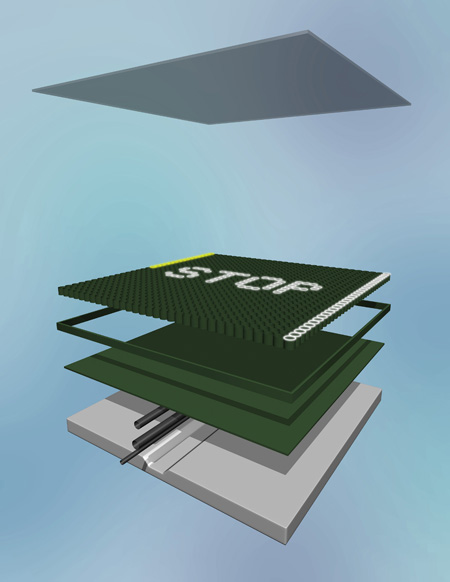Author:
Reported by Cliff Keys, Editor-in-Chief, Power Systems Design
Date
09/18/2010
I had the pleasure to talk with Scott Brusaw, an inventor and passionate advocate of clean energy, based in Idaho. He unfolded his mission to develop a road system that would not only utilize the power of the sun to provide enough power to become 100% clean in energy terms (no more coal or oil), but would also be cost competitive against the rocketing cost of construction materials for highways. Scott Brusaw is a man with a clear mission. He wants to help the U.S. to utilize the power of the sun to rid his homeland of the scourge of fossil based energy. As an inventor, he is also an engineer, so therefore logical and practical in his approach. He and his team have developed a solar road module that can collect and route energy intelligently along the U.S. highways.
The Obama administration has now made a request that sidewalks should be utilized to be self funding in terms of �giving back' energy to redeem the high costs in providing them. Scott's project had already started, but the project was deemed important enough to gain funding from the government for further prototype development. But who can ever imagine driving on glass? Scott has worked with experts at the top Universities in America and has established that glass can be made cost-effectively with the optical and all the necessary traction capabilities comparable to asphalt required for a tough, durable, cost-competitive roadway system that can collect and route energy from the sun to industry and households alike.


When asked just how much power can be expected from a one-mile (1.61km) stretch of road, Scott explained, "One mile = 5280 feet. Our Solar Road Panels are 12 feet by 12 feet (3.66 x 3.66m). Therefore, it will take 5280/12 = 440 panels to create one mile (one lane, 12 feet wide). Each panel is expected to produce 7600Wh of electricity daily based on 15% efficiency and four hours of sunlight per day. Thus, 440 x 7600Wh = 3.344MWhr per lane per mile. So a typical four lane highway will produce 13.376MWhr per mile, based on four hours of sunlight per day. According to a 2007 study by the U.S. Energy Information Administration, the average American home used 936kWh per month. Dividing this number by 30 will give an average need of 31.2kWh per day. Dividing this number into the 13.376MWhr per mile, gives us approximately 428. That's how many American homes can go "off-grid" for every mile of 4-lane Solar Roadway. We can wean ourselves off coal. Again, that's based on four hours of sunlight per day."

Scott's company is not publicly traded. He concluded, "We have (or can hire) the technical expertise to make the Solar Roadways a reality. We've received some government funding, but we're always open to a local angel investor who would like to become a part of this project and get his/her hands dirty. We're not interested in someone who's �just in it for the money', but someone who sees the vision and, like us, wants to leave the world a better place than when we entered it." There is a great deal more to this project than we have room for in this issue, but I look forward to working with Scott and his team on a full length technical article for a future issue. More information is available through the following (highly recommended) links: New YERT video: http://www.youtube.com/watch?v=Ep4L18zOEYI Scott's TEDx Talk: http://www.tedxsacramento.com/videos/ Solar Roadways website (contains contact information): http://www.solarroadways.com